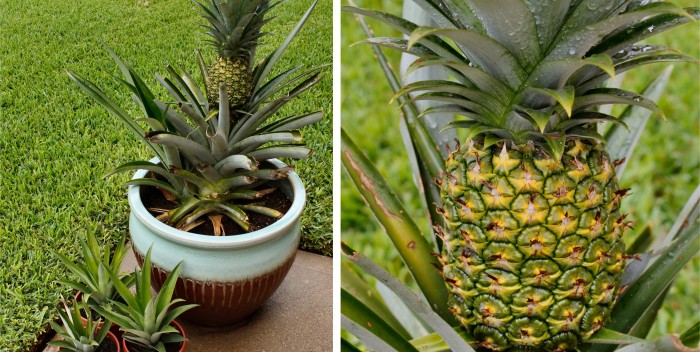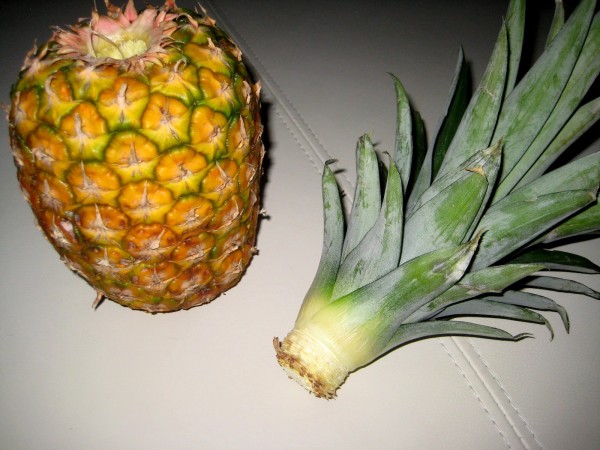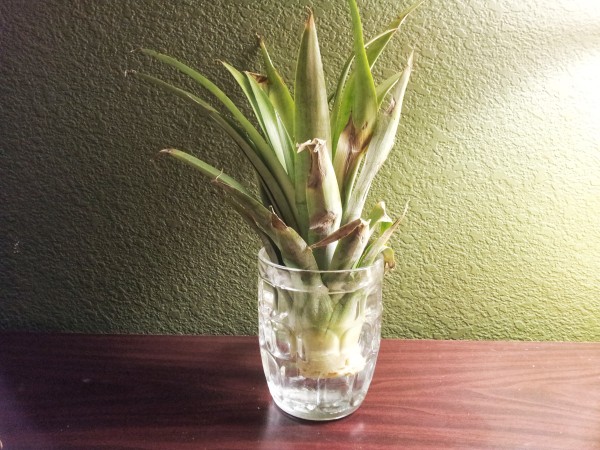Tropics within the home: how to grow pineapple
One of the most extraordinary tropical fruits found in our country is pineapple. Although this plant belongs to the thermophilic and grows in natural nature only in southern latitudes, we can grow it at home. Let's see how to do this successfully.
Pineapple varieties
In fact, there are many varieties of this tropical fruit, which are usually grouped into classes. Smooth Cayenne pineapples are egg-shaped and weigh up to 2.5 kilograms. Their maturation occurs gradually - from the bottom up. When the top turns yellow, it means the pineapple is fully ripe.
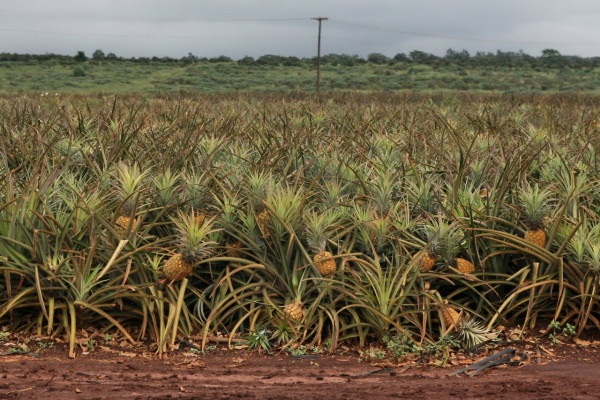 For commercial purposes and long distance transportation, a variety called Mauritius is most suitable. These pineapples taste good and are long-haul resistant.
For commercial purposes and long distance transportation, a variety called Mauritius is most suitable. These pineapples taste good and are long-haul resistant.
Kannara pineapples are shaped like cones with deep-set eyes and golden yellow flesh. They are high in carotene and minerals.
Amrita pineapples have the shape of a cylinder that tapers slightly at the top. They have a small crest and rather large fruits weighing up to 2 kilograms. This variety differs in that it has no indentations next to the eyes. Therefore, it is easy enough to clean it. Amrita fruits have a pleasant aroma and a thin skin. The pulp of this variety is distinguished by its special density and low acidity.
How to grow pineapple at home
Has now become popular grow in the conditions of the apartment, some types of exotic fruits. Pineapple is no exception. You can grow it from the top. To do this, buy a suitable pineapple at the store. Its tuft should have strong and healthy green leaves. The pineapple itself should be golden brown in color. Leaves should not be covered with gray spots.
Now prepare the top of the pineapple for planting:
- Grab all the leaves of the top with your palm and rotate around the axis. The top of the pineapple should emerge from the fruit along with a short lower stem.
- Remove a few lower leaves so that the pineapple trunk appears.
- Cut off the excess pulp and put the top on for several days so that the cut dries up and then does not rot.
- Now fill the glass with water and dip the top into it. The exposed trunk must be completely underwater.
- Place the glass on the windowsill and watch the plant.
- After a few weeks, the first roots will appear. Wait until they grow up a little. Then they can be moved into pots.
The land for planting pineapples should consist of the soil that is used for growing indoor plants, sand and peat. Be sure to place a drain on the bottom of the pot to prevent the soil from acidifying. The soil for the pineapple should be moist all the time, but do not over-water it. Place the pineapple pot in a bright spot, but not in direct sunlight. Cover the seedling with plastic or a glass jar. Keep the temperature warm enough until the pineapple takes root. Remove the jar periodically to air out the pineapple. Use only warm water for irrigation, and apply fertilizers no more than twice a month.
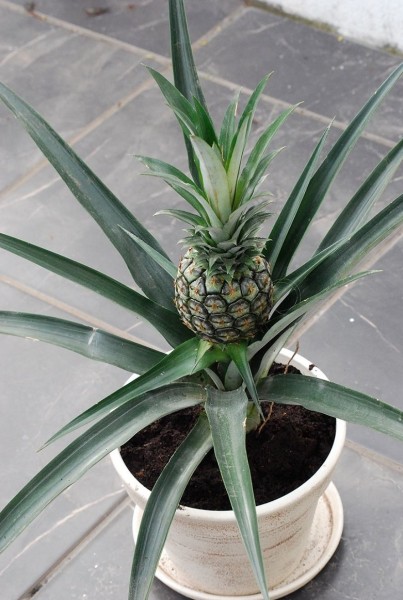 After a couple of months, the pineapple will take root well and can be transplanted into a larger container. This will allow the roots to grow freely. It is recommended that you transplant the pineapple annually. In summer, it can be displayed on the balcony. Water the pineapple well and feed it with mineral fertilizers twice a month.
After a couple of months, the pineapple will take root well and can be transplanted into a larger container. This will allow the roots to grow freely. It is recommended that you transplant the pineapple annually. In summer, it can be displayed on the balcony. Water the pineapple well and feed it with mineral fertilizers twice a month.
Two to three years after planting, the pineapple should begin to bloom. If flowers do not appear during this period, then feed the pineapple with an aqueous solution of ethylene. During flowering, the apical rosette actively grows in the pineapple, and basal buds appear. A well-grown crest is capable of producing large fruit. Root buds can be separated from the main plant and planted in separate pots.
When the pineapple flowering process is over, all old leaves will need to be removed. Then you need to water the plant twice a week. Thus, in a few years you will be able to breed a whole pineapple plantation at home.
How pineapples are grown: video
Watch a video on growing pineapple. You will have a complete understanding of this simple but very exciting process.
